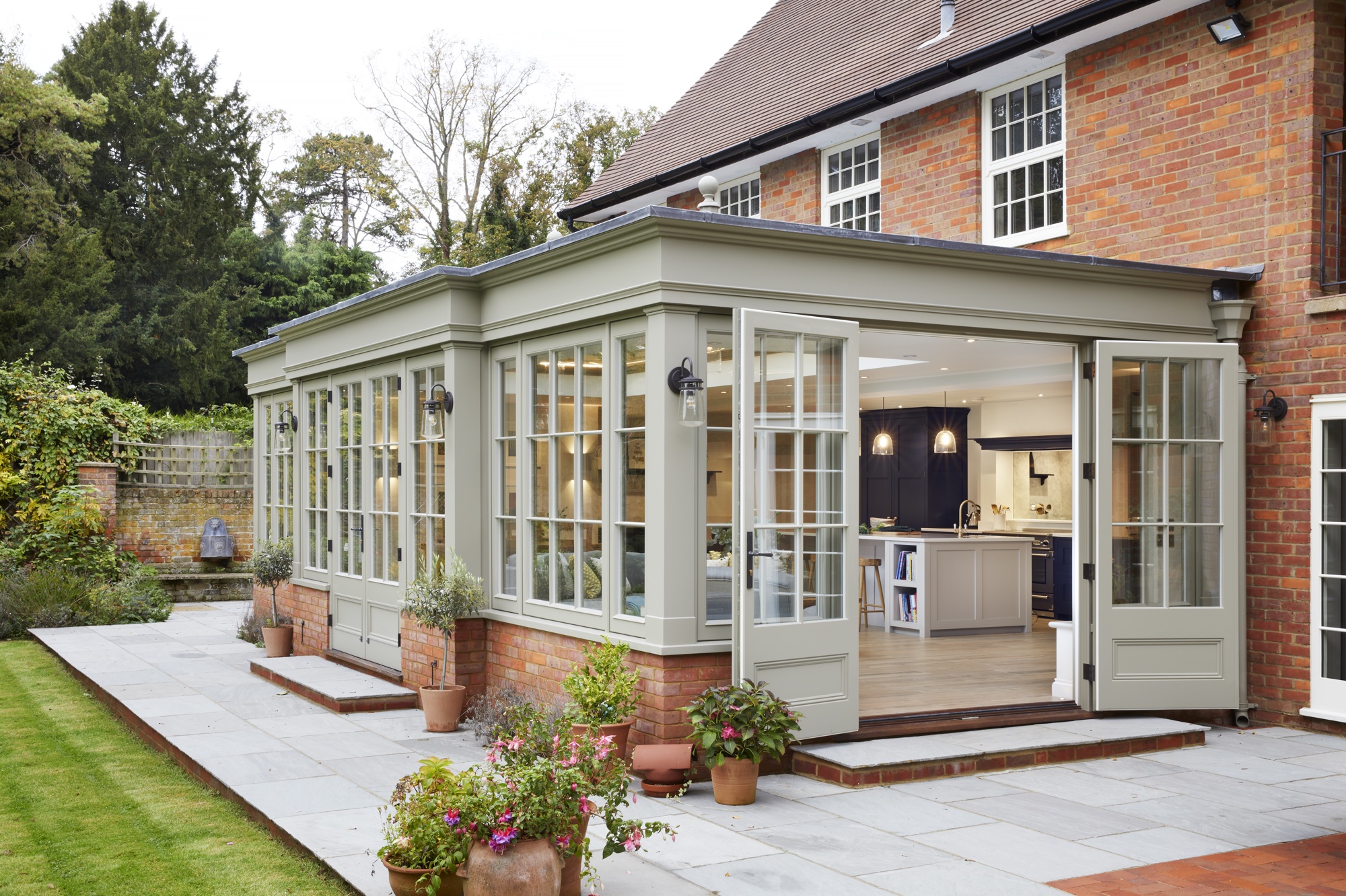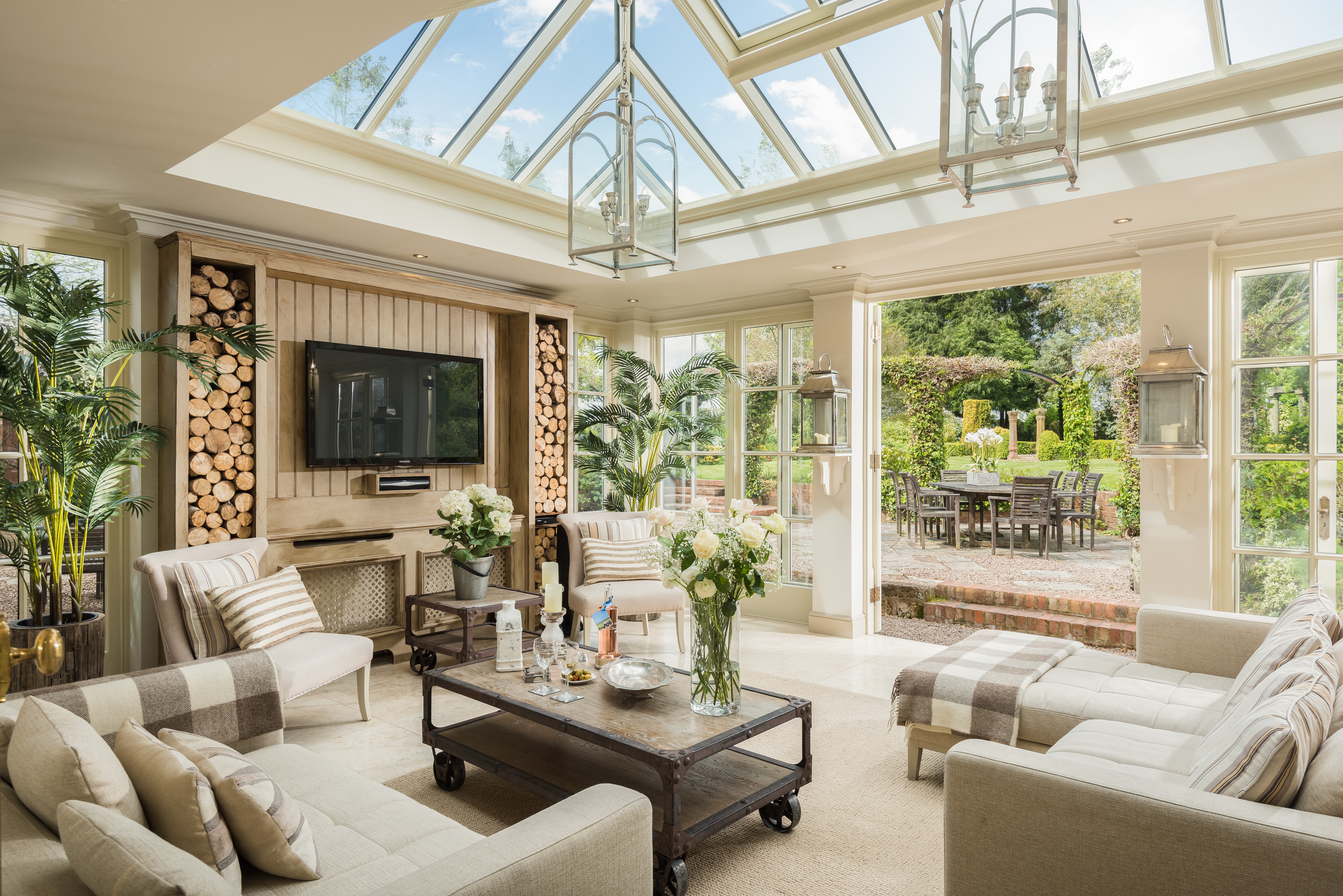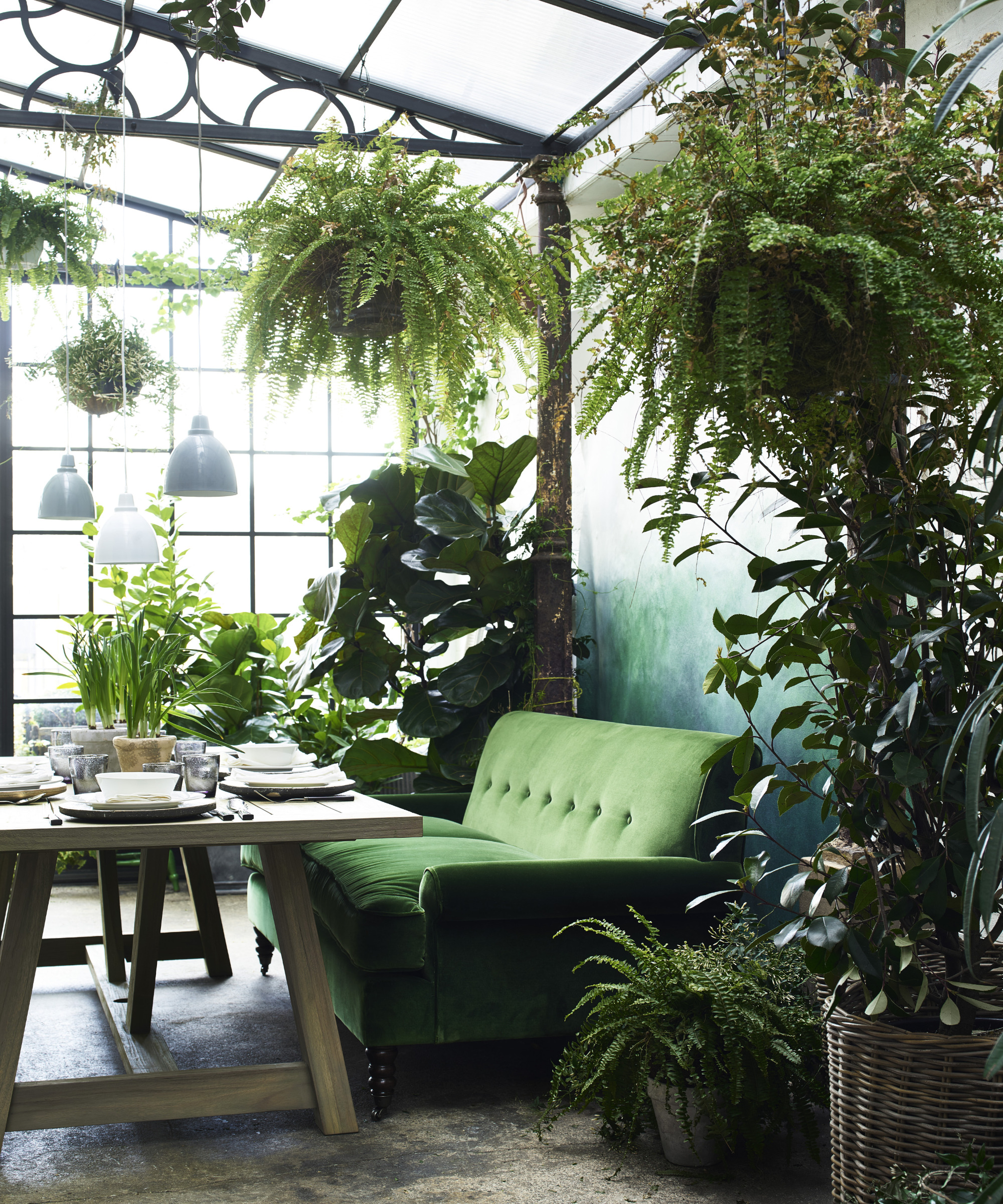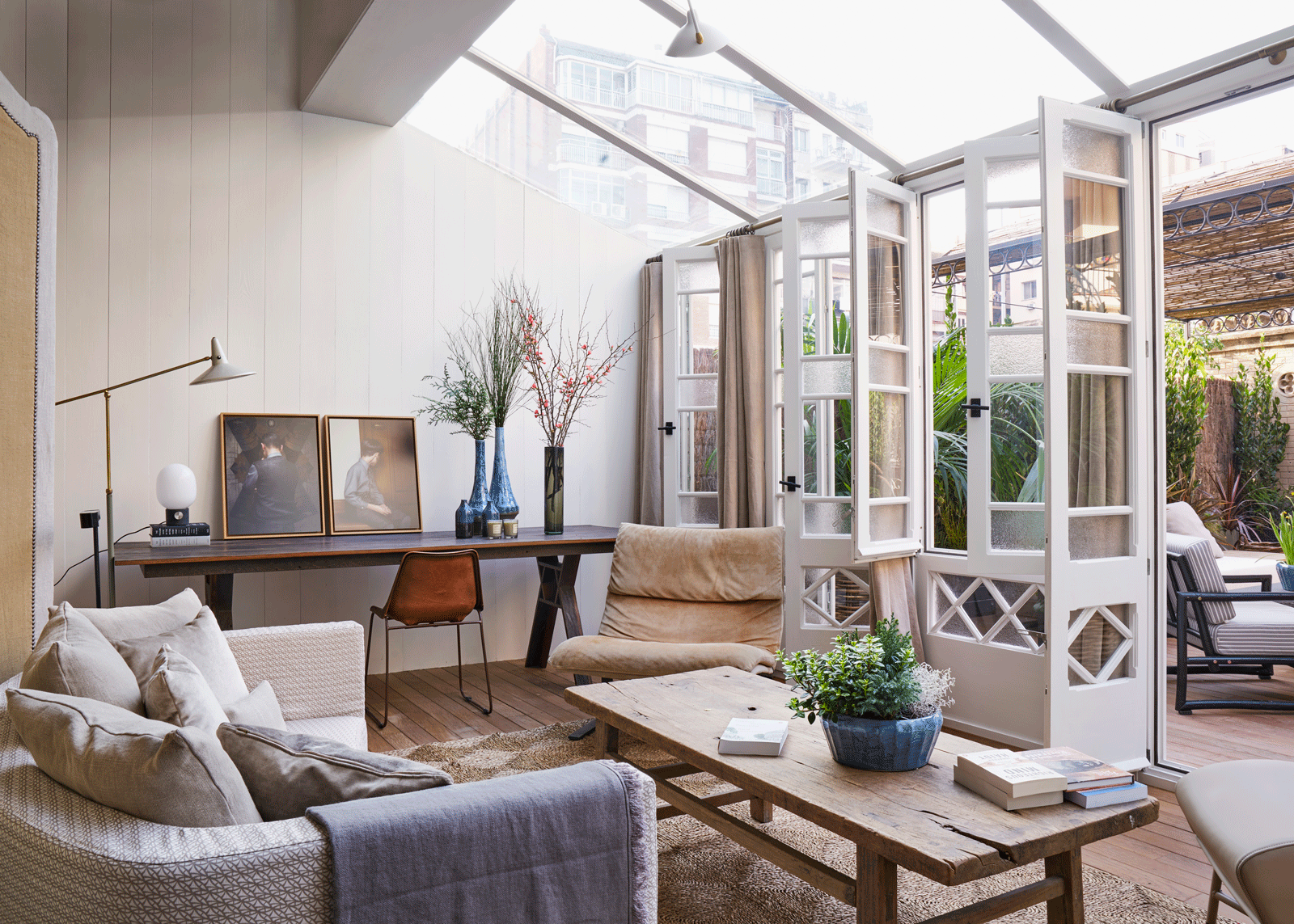What is the difference between conservatories and orangeries?
Considering adding an extension? Here we weigh up the difference between conservatories and orangeries

If you are considering building a garden sunroom, you've probably found yourself asking what exactly is the difference between a conservatory and an orangery? Despite them both extending homes, bringing in lots of lighting and creating that connection between outdoors and in, there are actually plenty of differences, from costs to design.
As Phil Brown from Pilkington Glass explains, ‘There are subtle but important differences between these two types of extension. They both stem from the desire to maximise light in our homes and have a space where we could enjoy the benefits of the outdoors from the comfort of the indoors.’
As the longer days hint at spring’s soon arrival and many of us spend longer at home due to hybrid working, 2022 might be the year that you finally invest in the sunroom you have been dreaming of. ‘Nothing compares to the atmosphere of a conservatory or orangery in providing a bright, calming, and relaxing place in which to spend time,’ says Lisa Morton, Director of Vale Garden Houses.
So if you are considering adding an extension, but not sure whether to go down the orangery or conservatory route, we've got you covered. We asked the experts to lay out the difference so you can make the best decision for your home...
What is the difference between a conservatory and an orangery? Here is everything you need to know
What is an orangery?
Originally designed in Renaissance Italy to house orange and lemon trees in the winter, ‘An orangery is an extension with a glass roof that typically covers less than 75% of the total roof area and glass walls that cover less than 50% of the total wall area,’ says Thomas Goodman, property and construction expert.
‘Typically, an orangery will have a lantern-shaped roof or flat roof and lantern rooflight together with brick pillars in the corners of the structure,’ Andrew Thompson at Ultraframe adds. ‘They were previously always seen as a very glamorous add-on to a house, which could regulate temperate more effectively than a conservatory.’

What is a conservatory?
Though ‘conservatory’ traditionally refers to large glass extension designed, like a greenhouse, to grow plants, the modern conservatory ‘is a home extension with a glass roof covering at least 75% of the roof area, and glass walls covering at least 50% of the total wall area,’ says Thomas.
The Livingetc newsletters are your inside source for what’s shaping interiors now - and what’s next. Discover trend forecasts, smart style ideas, and curated shopping inspiration that brings design to life. Subscribe today and stay ahead of the curve.
Karen Bell, creative director at David Salisbury, adds: ‘Conservatories of the 80s and 90s are often associated with climate control issues, namely being too hot in summer and too cold in winter. However, thanks to more updated manufacturing methods, alongside advances in heating and ventilation, it’s possible to have an extension that is suitable for all seasons.’

Which should I choose for my garden: a conservatory or an orangery?
‘Neither is better than the other,’ says Lisa at Vale Garden Houses. ‘Whether to add a conservatory or orangery to your home will depend very much on the architectural style and detail of the building.'
‘In the end it comes down to personal preferences, and what works with your home,’ adds Karen at David Salisbury. ‘An oak framed orangery looks great with a rustic countryside cottage, while a sleek and chic conservatory with bifold doors, for example, works well with a modern property and is ideal for blurring the lines between indoors and outdoors.’
What should I consider when choosing between an orangery and a conservatory?
‘Consider why you need the extra space and how you intend to use it,’ says Thomas. ‘For example, do you want a better view of the garden, or do you want to install a new kitchen? Are you going to sell your house or stay in it? Orangeries add more value, but this should not be your only consideration. Instead, consider what will improve your quality of life.
‘It is also worth noting that, while conservatories typically do not require planning permission in the UK, an orangery is more likely to do so. Speak with your local builder find out what the rules are in your area or head to the Planning Portal,’ Thomas recommends.

What is the cost difference between a conservatory and an orangery?
Prices can vary for both conservatories and orangeries depending on the size and the materials used.
‘A fully fitted conservatory can range in price from £15,000 to £35,000 – 4000 x 5000 in wood, uPVC, or aluminium,’ says Thomas. ‘A basic uPVC conservatory could cost £5,000, while an orangery could cost anywhere between £15,000 and £45,000 to build. A fully fitted, bespoke orangery made from hardwood can cost around £50,000 upwards depending on the size and design.’
‘While generally more expensive than conservatories, orangeries can add more resale value to the home and more versatile space use,’ Thomas adds.
Which is easier to build?
It is easier to construct a conservatory. You can even do it yourself, if you already have some construction experience:
‘All you need are some simple, straightforward instructions and the help of a professional or someone with experience in construction,’ Thomas says. ‘It may appear intimidating initially, but there is no need to be concerned, and the fact that you can save thousands of pounds by building your conservatory makes it well worth it.’

Which design is more customisable?
‘Both conservatories and orangeries are equally customisable, and each option should be unique, built to their own specification and the needs of the people who will use it,’ says Andrew at Ultraframe.
‘Many builders can modify Victorian, Edwardian, gable end, and lean-to conservatories to fit the most unusual situations, such as cutting out chimney breasts, building corner conservatories, and creating substantial portal frame conservatories,’ adds Thomas. ‘If you have a space where you want to fit a home extension, you can usually get a custom design and manufacture the building to your exact specifications.’
However: ‘There’s much more freedom in the structure of conservatories in how it can look and be designed as there isn’t any need to replicate the design features of the home it’s attached to,’ says Phil at Pilkington Glass. If you have a period house, a conservatory will be easier to blend with the existing property.
Which is more heat efficient?
‘The idea that conservatories are hot in summer and cold in winter is an outdated message,’ says Andrew at Ultraframe. ‘As long as you choose the right glass for your new conservatory, it will achieve the same thermal performance as an orangery and both can be comfortable all year round.’
But what is ‘the right glass’? ‘If your conservatory or orangery is south facing, you should use glass which has been coated to reject a large proportion of solar rays, so heat can’t pass through,’ says Andrew. ‘On the other hand, if your structure is going to be quite shaded, you’ll need to think about your heat source and choose glass with a low uValue to keep the heat in.
‘Conservatories, which remain separate from the main property, need their own heating system, while an orangery, which acts more as an extension, can tap into the main heat source in the home,.'

Which is easier to maintain?
‘Conservatory cleaning can be done in small doses and regularly to make life easier,’ says Thomas. ‘Make it a habit to clean the windows at least once a month, and all interior uPVC surfaces should be regularly wiped with a damp cloth, especially if dust and dirt begin to accumulate.'
In terms of orangeries, however: ‘Many have guttering and downspouts that become clogged in the autumn and winter months as the leaves fall and the weather turns unfavourable with lashings of wind and rain,’ says Thomas. ‘Clearing them of debris and leaves is not a great job, but it will pay off in the long run.
‘Maintaining conservatories is a more straightforward job than maintaining an orangery,’ Thomas says. ‘So if you do not have the time to do a lot of maintenance, a conservatory is definitely a better option for your home.’
Olivia Emily is one of the most exciting new talents in consumer lifestyle journalism. Currently finishing off a Masters in Journalism at the City University, London, she has quickly proved herself at being adept on reporting on new interiors trends. A regular contributor to Livingetc, she is brilliant at being able to decode information for our audience.